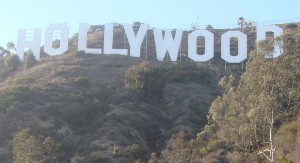gendered biases: how to succeed in hollywood

Image via Wiki Commons (CC BY-SA 3.0)
A new report released this week has told us what we already know. Hollywood is a boys’ club. The research suggests that being a straight, white male is the perfect recipe for success in tinsel town.
The study from the Media, Diversity & Social Change Initiative at USC Annenberg is the most comprehensive analysis of diversity in recent popular films ever conducted. They examined data assessing gender, race, ethnicity and LGBT status in films across seven years. The results speak for themselves.
The report found an indisputable bias against females, people of colour and LGBT+ characters on the big screen.
Across 700 films, only 11% had balanced casts. Broken down, this means only 30% of the almost 31,000 speaking characters evaluated were women. Only 21 of the top 100 films from last year featured a female lead and no female actors over the age of 45 performed a lead or co-lead role. Furthermore, females in the 13-20 age bracket were just as likely to be shown in sexy attire and with some nudity as 21-39 year old females.
It appears the male gaze is being well served.
The top 100 films from last year also tell us something more; we underrepresent any demographic that doesn’t include a straight white male. In the top 100 films of last year, 17 films had no African American speaking characters; more than 40 had no Asian speaking characters, and of more than 4,000 speaking characters only 10 were gay, five were bisexual and just four were lesbian. There were no speaking transgender characters in last year’s top 100 films.
It doesn’t get better behind the camera.
Across the top 100 films from last year, only 15.8% of content creators working as directors, writers and producers were women. More specifically, women only accounted for 1.9% of directors. This only accounts for two female directors across the top 100 films of 2014.
This bias doesn’t make sense. We’ve heard for years that women aren’t funny, that they can’t lead a successful film. However Melissa McCarthy’s Spy outsold Adam Sandler’s Pixels, though we are still giving his has-been brand of comedy time on our screens without question. Furthermore, Pitch Perfect is sitting at number seven in this year’s box office successes, beating out Ant Man, Terminator and Mission Impossible… yet we still have people questioning if an all-female Ghostbusters cast will work.
Spoiler alert: it probably will.
The author of the study and founder of the initiative, USC Annenberg Professor Stacy L. Smith said ‘the picture that film presents is one that bears little resemblance to our nation’s demography’.
Hollywood has influence over our social and cultural norms; so when they exclude certain demographics in their entirety, a very specific image is reinforced. This image is of who is most important in society.
Now we already have a whole host of ingrained social customs and laws that ignore or repress demographics that do not include being a white, straight male, but now we have to contend with Hollywood being complacent with this image too. It’s obvious to see why they are sticking to their guns with this one; it’s a proven hit formula. This is the way it’s always been. Hollywood is about making money, and Matt Damon and Tom Cruise are seen as bigger moneymakers than Kerry Washington or Laverne Cox; despite their successes.
But where do we go from here? It’s been over 100 years of Hollywood and we are still seeing much of the same faces on the screen. Film should be acting as a leader in representing diversity, but instead it is holding progress back.
‘At a time when Jill Soloway is lauded for her storytelling prowess on Transparent and Caitlyn Jenner for her courage, film has a long road to traverse before it represents the diversity we see in TV and digital platforms, and in our communities,’ Professor Smith said. ‘While “love wins” in our nation, it loses in film.’
This report has told us something obvious; straight white males continue to be the most visible demographic. It is really past the time for Hollywood to make a change and start representing society more accurately as what is represented on screen continues to be reflected off screen.


Reading this in one tab and Buzzfeed’s Rose McGowen profile (on her taking on the sexism in the film industry) in the other. They’re perfect companion pieces 🙂
I agree: the biases are ridiculous and make no sense. It makes no sense that we’re still seeing the same faces, as you say, over and over again. It makes me so mad!
http://www.buzzfeed.com/kateaurthur/rose-mcgowan-is-starting-a-revolution?utm_term=.blJJOWK49#.ykZQQZ7kP8